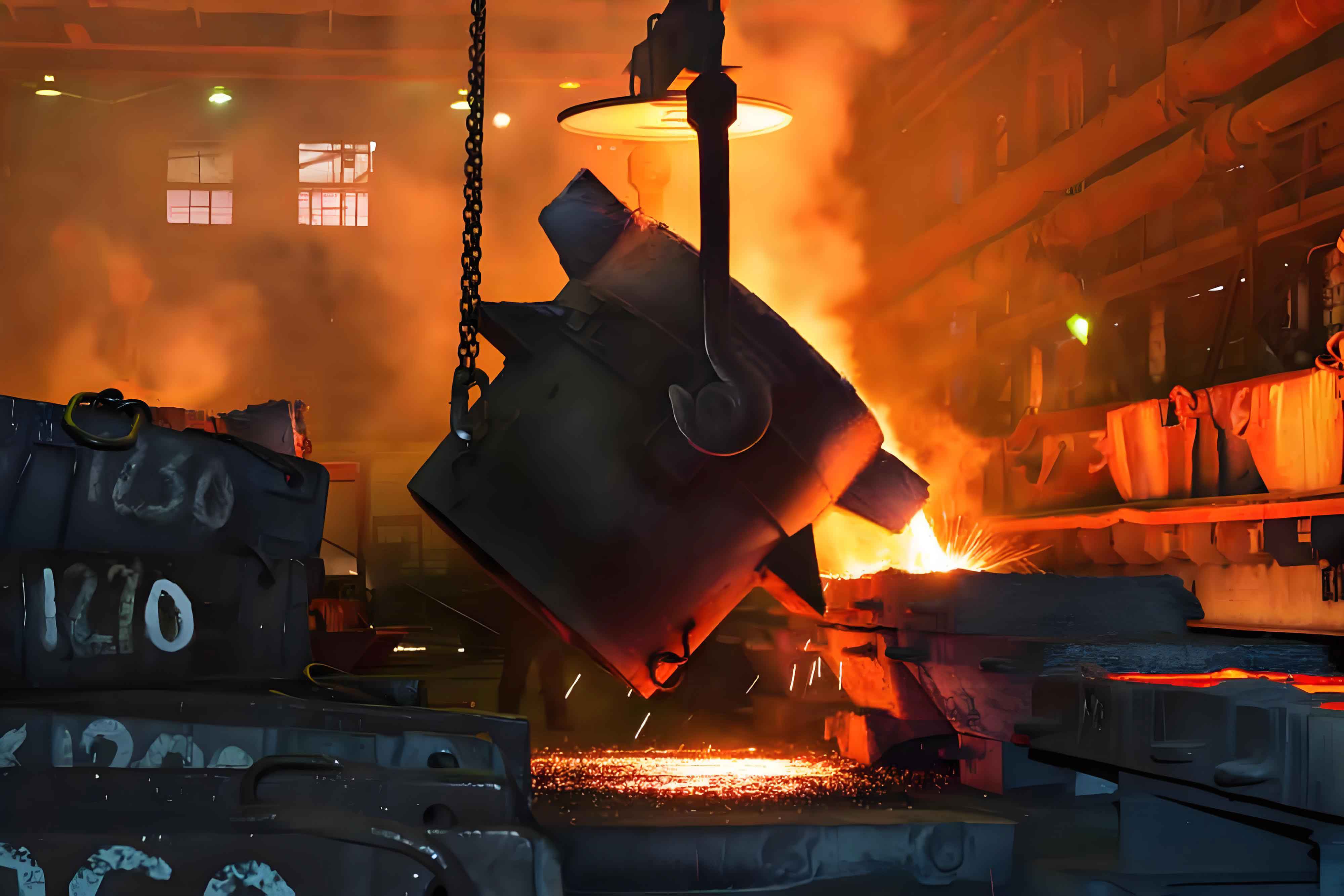Grey cast iron remains a cornerstone material in automotive applications due to its excellent castability, damping capacity, and cost-effectiveness. This investigation focuses on optimizing the microstructure and mechanical properties of HT350-grade grey cast iron through advanced inoculation strategies and alloy modification.

1. Inoculation Effects on Graphite Morphology
Four distinct inoculants were evaluated for their impact on graphite structure:
| Inoculant Type | Graphite Length (μm) | Curvature Index | Distribution Density (nodes/mm²) |
|---|---|---|---|
| 75% FeSi | 120-150 | 1.2 | 850 |
| Zr-Si | 100-130 | 1.5 | 920 |
| Zr-Si-Al | 90-110 | 1.8 | 1050 |
| Zr-Si-Mn | 80-100 | 2.1 | 1180 |
The graphite morphology directly influences tensile strength through the relationship:
$$ \sigma_b = \sigma_0 + k_g\left(\frac{1}{\sqrt{L}}\right) $$
Where \( \sigma_0 \) = 250 MPa (matrix contribution) and \( k_g \) = 85 MPa·μm0.5 for grey cast iron.
2. Modification Mechanism and Austenite Dendrite Control
JF-1 modifier containing Ti/N demonstrated remarkable effects on primary austenite formation:
| Modifier Content (wt.%) | Dendrite Arm Spacing (μm) | Eutectic Cell Count (cells/mm²) |
|---|---|---|
| 0.0 | 45-50 | 120 |
| 0.8 | 28-32 | 180 |
| 1.0 | 20-25 | 240 |
The secondary dendrite arm spacing (SDAS) follows the cooling rate relationship:
$$ \lambda_2 = 80\cdot v^{-0.35} $$
Where \( v \) represents cooling rate in °C/s.
3. Molybdenum Alloying Effects
Addition of 0.25wt.% Mo enhanced both mechanical and thermal properties:
| Property | Base Alloy | Mo-Added | Improvement |
|---|---|---|---|
| Tensile Strength (MPa) | 445 | 470 | 5.6% |
| Thermal Fatigue Cycles | 850 | 1200 | 41% |
| Wear Resistance | 0.32 mm³/Nm | 0.25 mm³/Nm | 22% |
The improved thermal fatigue resistance correlates with modified pearlite spacing:
$$ N_f = A(\Delta \epsilon_p)^{-n} $$
Where \( \Delta \epsilon_p \) represents plastic strain range and \( n \) = 2.1 for Mo-containing grey cast iron.
4. Optimized Process Parameters
The synergistic effect of Zr-Si-Mn inoculation with 1.0% JF-1 modifier yields superior properties:
| Parameter | Optimal Value | Influence Factor |
|---|---|---|
| Carbon Equivalent | 3.85-3.95 | Graphite Morphology Control |
| Si/C Ratio | 0.55-0.65 | Matrix Hardness |
| Modification Temperature | 1480-1520°C | Nucleation Efficiency |
This comprehensive approach enables production of grey cast iron components with 400-450 MPa tensile strength while maintaining excellent machinability (surface roughness Ra 1.6-1.8 μm).
5. Industrial Implementation
The developed technology demonstrates 18% improvement in production yield and 25% reduction in machining costs for engine blocks. The enhanced grey cast iron formulation meets stringent automotive requirements for high-stress components while maintaining the inherent advantages of traditional cast iron metallurgy.
